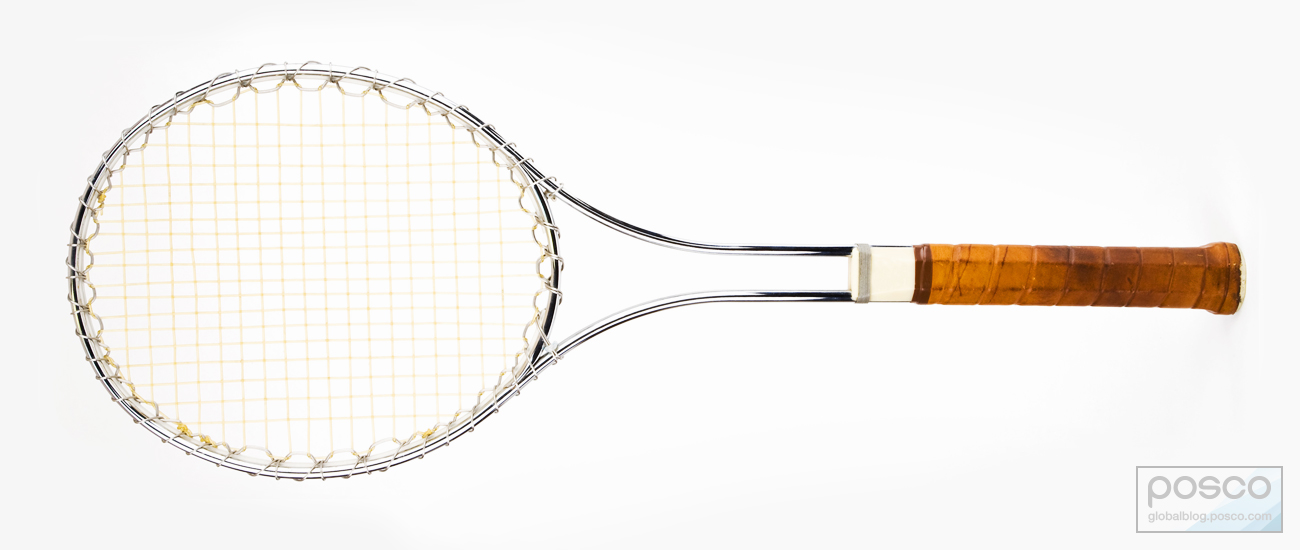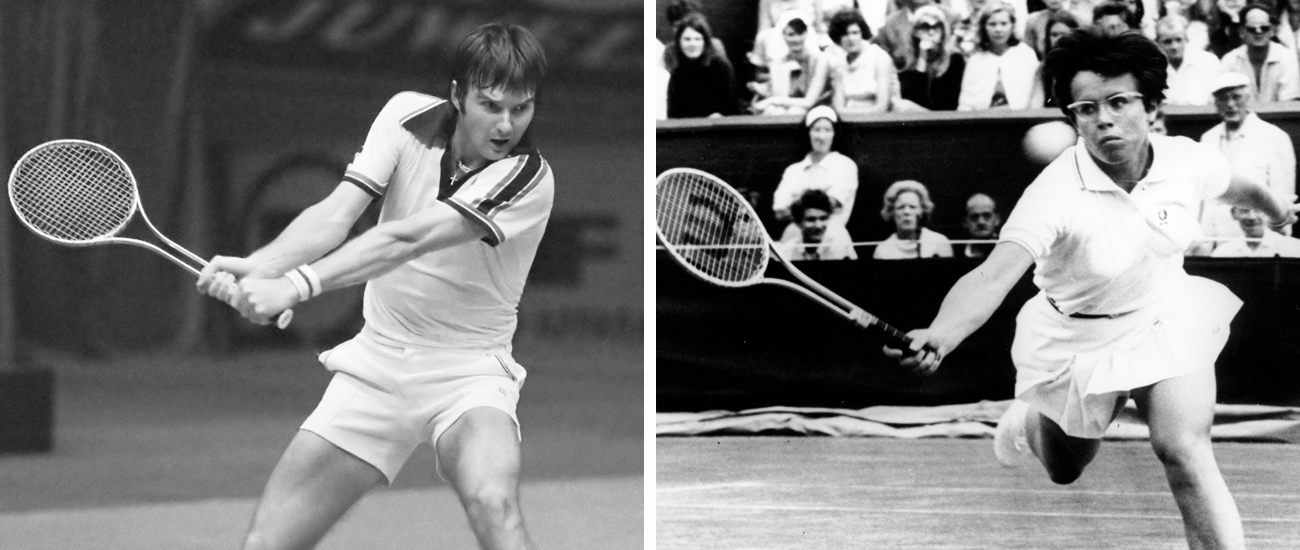As the 2017 tennis season begins at the Australian Open, tennis fans will see both familiar faces and rising stars. Serena and Djokovic, Nadal and Kerber – the best in the game are in Melbourne to battle it out on the baseline and at the net. While today’s tennis seems to be moving at lightning speed, tennis was, until recently, a much different affair.
Thought to have its origins in 12th century France where hands were used to hit the ball, tennis changed in the 16th century when rackets were introduced, and then again in 1967 when steel rackets were popularized and the game began to resemble what we know today.
50 Years Ago, Steel Changed Tennis

The Wilson T-2000 (above) revolutionized tennis with its iconic stainless steel design. Tennis pro Jimmy Connors used the racket until it went out of production, and Billie Jean King once said, “We made an absolute sensation of that racket.”
For centuries, rackets were made of wood with only small advancements made to the design. But in 1967 Wilson released the T-2000 and the metal racket forever changed tennis. Other steel rackets had come out before 1967. In 1922, the Dayton Steel Racket was designed by 7 time US Open champ, William Larned, and the T-2000 itself was a licensed version of the one designed by French tennis player and fashion designer René Lacoste. The BBC noted that “The most dramatic change in tennis racquet tech over the years was that initial transition from wood to steel.” The T-2000 was not the first, but it was the one that grabbed the public’s and the professionals’ attention.
The Wilson T-2000 was made of lightweight stainless steel with a tiny head and coiled hooks at the edges. Tennis legend Billie Jean King began using it and in 1967 became the first player to ever win a Grand Slam with a metal racket. Several years later Jimmy Connors adopted the steel racket and “couldn’t put it down.” Connors continued using it until Wilson stopped manufacturing them in the 1980s – winning three Grand Slams with it along the way.

(Left) Jimmy Connors with the Wilson T-2000 (1978). (Wikimedia) / (Right) Billie Jean King defeats Fay Moore in the fourth round of Wimbledon in 1968. She would later go on to win the tournament using the Wilson T2000. (Thirteen)
While the tennis world moved on to lighter materials like aluminum, graphite, and now graphene, the impact of the T-2000 cannot be overstated. In a sport that used wooden rackets for hundreds of years; the T-2000 can be seen as a singular turning point for modern tennis as players began to realize how their games could improve with lighter, stronger rackets. As writer Jon Reiner said, “[The T-2000] more than any other would rally the cultural boom of modern tennis…”
When Wilson released its first steel racket 50 years ago, it pushed the game of tennis into a new era. Players were able to use rackets that were lighter and stronger allowing them to have greater control over their game. The progression of tennis rackets continues today but it was steel that started the revolution back in 1967.
Don’t miss any of the exciting stories from The Steel Wire – subscribe via email today.
